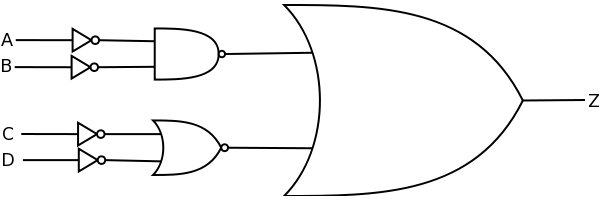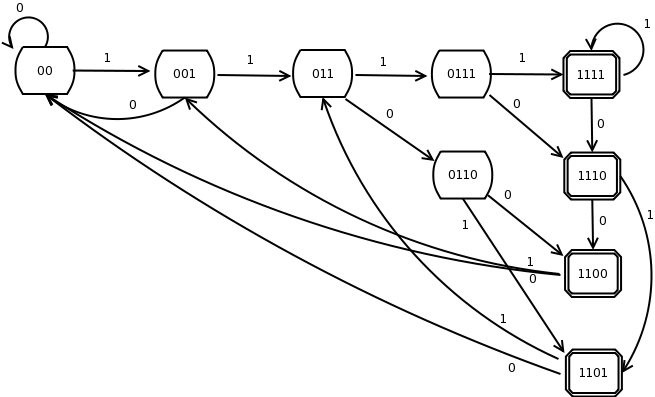|
|
||||||||||||||||||||||||||||||||||||||||||||||||||||||||||||||||||||||||||||||||||||||||||||||||||||||||||||||||||||||||||||||||||||||||||||||||||||||||||||||||||||||||||||||||||||||||||||||||||||||||||||||||||||||||||||||||||||||||||||
Homework 3 // Due at lecture Wed, Feb 16Primary contact for this homework: Peter Ohmann [ohmann at cs dot wisc dot edu] You may do this homework with one other person from your section. You must put both names on the assignment. Please staple multiple pages together. Problem 1 (2 points)
Draw a transistor-level circuit for a three-input AND gate. Problem 2 (3 points)
Problem 3 (3 points)
Problem 4 (5 points)
Given the circuit:
Problem 5 (3 points)
Draw the FSM state-diagram for recognizing all 4-bit unsigned numbers greater than
or equal to 12. (Hint: Each edge will either correspond to
a 1 or a 0. If the last four bits correspond to a value greater than or equal
to 12, your FSM should have 1 as output; otherwise, it should have 0). For
help, look at the lock example in Figure 3.28 of the textbook (this is an
extension of that example). Problem 6 (3 points)
How many memory locations can be addressed with a 16-bit address? Assuming the
memory is byte-addressable and we are working with standard 32-bit integers,
what is the theoretical maximum number of integers we could store and reference
in our memory? (Hint: Think about how many total bytes/bits are in the memory).
You may, of course, provide your answers as 2n. Problem 7 (4 points)
The figure below shows the gate-level circuit for a half-subtractor and its
associated truth table. Similar to the full-adder, the full-subtractor takes
two bits to be subtracted and a borrow-in, and outputs the result bit, and a
borrow-out. Based on this and your knowledge of the full-adder:
Problem 8 (2 points)
If one begins with the R-S latch (Figure 3.18 in the textbook) and replaces
the NAND gates with NOR gates, one obtains what is called an S-R latch.
What impact will this have on the action of the latch? |







